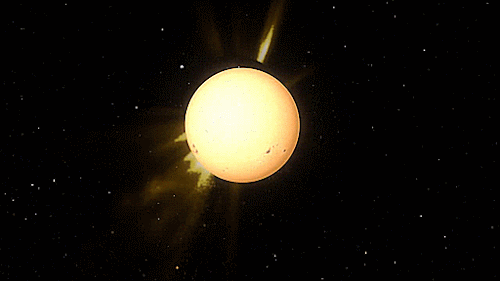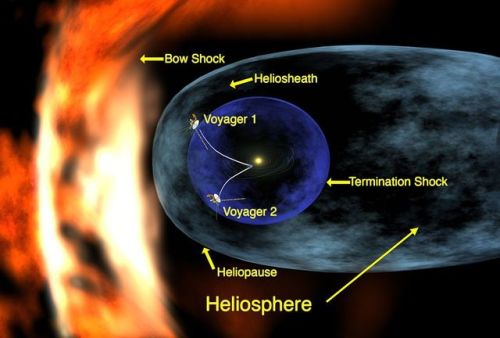Heliosphere - Blog Posts

A solar cycle: a montage of 10 years worth of x-ray images taken by the ようこう (Yōkō 'sunbeam') sun-observation satellite.
The Sun undergoes a cycle of magnetic activity with a period of about 11 years. At solar maximum, solar observatories see more sunspots on the Sun's surface. Solar flares and coronal mass ejections are bigger and more frequent, triggering auroræ in Earth's skies, interfering with some types of radio communication, and irradiating deep space hardware. The Sun's magnetic field also undergoes a polarity inversion during solar maximum, when the north and south magnetic poles on the Sun swap (this happens again 11 years later in the next maximum). By contrast, the solar minimum has very few or no sunspots and the Sun is generally calm; a good time for deep space missions.
The last solar maximum was in February 2014. The last minimum was December 2019, marking the transition from cycle 24 to 25 (records began in 1755). The next maximum is predicted for the second half of 2025.




The heliosphere is the bubble-like region of space dominated by the Sun, which extends far beyond the orbit of Pluto. Plasma “blown” out from the Sun, known as the solar wind, creates and maintains this bubble against the outside pressure of the interstellar medium, the hydrogen and helium gas that permeates the Milky Way Galaxy. The solar wind flows outward from the Sun until encountering the termination shock, where motion slows abruptly. The Voyager spacecraft have explored the outer reaches of the heliosphere, passing through the shock and entering the heliosheath, a transitional region which is in turn bounded by the outermost edge of the heliosphere, called the heliopause. The shape of the heliosphere is controlled by the interstellar medium through which it is traveling, as well as the Sun and is not perfectly spherical. The limited data available and unexplored nature of these structures have resulted in many theories. The word “heliosphere” is said to have been coined by Alexander J. Dessler, who is credited with first use of the word in the scientific literature.
On September 12, 2013, NASA announced that Voyager 1 left the heliopause on August 25, 2012, when it measured a sudden increase in plasma density of about forty times. Because the heliopause marks one boundary between the Sun’s solar wind and the rest of the galaxy, a spacecraft such as Voyager 1 which has departed the heliosphere, can be said to have reached interstellar space. source